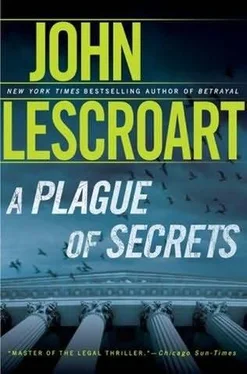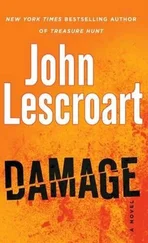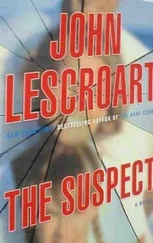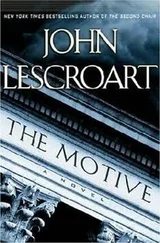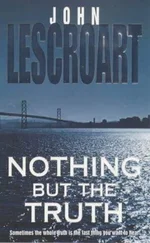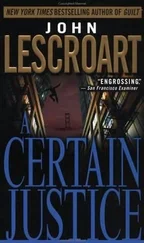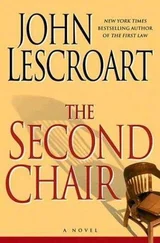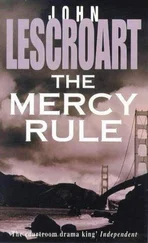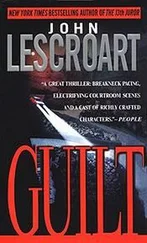“What do you mean?”
“Ruiz was going to get in touch with Wyatt Hunt if he came back into BBW. And by the way, it looks like the whole crew down there was getting cut in.”
“Yeah, we’re assuming that. We’ll be talking to all of them this time, instead of a select few. But this Paco, is he on Vogler’s list?”
“No.”
“No, of course not,” Glitsky said. “He wouldn’t be. How’d you find out about him?”
“Well, Ruiz, first. Then Maya.”
Glitsky’s eyes narrowed. “She knew him too.”
“Knew of him. The name. Back at USF. He hung out with Vogler and Preslee and-maybe-killed a guy in a liquor store they held up.”
This stopped Glitsky midbite. “Maybe.”
Hardy shrugged. It was what it was.
“Where?”
“I don’t know. Except it was probably in the mid-nineties-ninety-five or -six.”
“It might have been in the papers. There would have been an investigation. Maybe a suspect.”
“Knock yourself out,” Hardy said.
“Did Paco know Ruiz was looking out for him?”
“No idea. Anybody working there could have told him, though.”
Glitsky put down his fork. “You’re not making this up?”
“Not any of it.”
After lunch Hardy stood and approached the forensic accountant in the witness chair, seemingly as relaxed as he’d been all morning. “Mr. Schermer,” he began, “you have given a great deal of technical testimony about accounting practices, working with numbers. Are any of these numbers subject to a margin for error?”
“Well, yes, of course. Some to a greater extent than others, but generally, yes.”
“Referring to the analysis you offered on BBW’s gross income versus the amount of raw coffee bought over the last fiscal year, would this have a greater or lesser margin for error than some of the other calculations you performed and shared with the jury?”
“Rather on the high side, I’d think. It is, after all, an estimate.”
“An estimate, with a margin for error rather on the high side. I see. And is there an industry standard that enumerates the margin for error in this kind of analysis?”
Here, for the first time, Schermer’s face creased into something like a frown. “I’m not sure what you mean.”
“Well, I mean you take a certain weight amount of a raw product-coffee in this case-and you do an analysis that shows it takes, say, a pound of coffee to make a certain amount of cups, and then you deduce that the business didn’t buy enough raw coffee to make as many cups as it claimed it sold. Isn’t that the basic idea?”
“Basically, yes.”
“Well, then, can we assume that this type of analysis is a standard tool in the industry?”
“In a general way, yes.”
“With other products, you mean?”
“Yes.”
“How about with coffee? Is this a test with a long history of analysis and comparison with other similar tests?”
“Well, no. This was specific to this one business. BBW.”
“Specific to this one business? Do you mean to say that other licensed and accredited forensics accountants such as yourself, and in fact the organization to which you belong, have not established benchmarks to measure the reliability of these analyses?”
“Well, no, not exactly, but-”
“No is sufficient, thank you, Mr. Schermer. Now, can you please tell the jury a little about the methodology you employed to measure the amount of coffee needed to make a cup at BBW?”
Finally given a chance to simply discourse on his specialty again, Schermer leaned back in the chair and faced the panel. “Well, I gathered information from other coffee shops in the city, both chain and individually owned, and took the average of the number of cups of coffee produced from every hundred pounds of beans.”
“How many coffee shops did you use for your comparison?”
“Ten.”
“And how many different kinds of beans were represented in your answer?”
“I don’t know what you mean.”
“Well, beans come from a lot of different places. South America, Africa, Jamaica, and so on. So what kinds of beans were represented in your sample?”
“As I recall, most of them were from Colombia.”
“And is that the sole source of BBW’s beans, Colombia?”
“No, I don’t think so.”
“They came from all over the world, did they not?”
“Yes, I believe so.”
“All right. And do you know how many bags were delivered from all over the world over the course of the fiscal year to BBW?”
“I don’t know that, exactly. Perhaps hundreds.”
“But several thousand pounds of coffee, wouldn’t you say?”
“Yes, at least.”
“And did you test to make sure that all of that coffee had the same density? That is, approximate number of beans per pound?”
“Uh, no.”
“So the representative sample you used for your analysis might have been stores that used more or fewer beans to make a cup, isn’t that true?”
“I guess so. Yes.”
“And in fact, BBW was a very popular coffeehouse, was it not?”
“Yes.”
“Could that popularity have been based on the flavor of its coffee? That is, that its coffee was stronger or more mild than the shops you used in your sample?”
“I have no way of knowing that.”
“All right, then.” Hardy glanced over to the jury, all of whom were with him, following the cross-examination with none of the more common postlunch torpor. “Let’s talk for a minute, if we may, about the coffee made from these beans. Is there a standard BBW uses for various strengths of coffee? Strong? Medium? Weak?”
“I used medium, which is their house blend strength.”
“But do they serve other coffees of different strengths?”
“Yes.”
“Both stronger and weaker?”
“Yes, which is why I used medium, to be about average.”
“But do you in fact know the percentage of coffee actually brewed there that is weak, medium, or strong?”
Schermer took a breath, no longer enjoying himself at all. “No.”
“And what about espresso?”
“What about it?”
“It was a rather large percentage of the coffee sold at BBW, was it not?”
“Yes, it was.”
“Do you know the exact percentage, Mr. Schermer?”
“No.”
“And espresso is roasted differently than other blends of coffee, is it not?”
“Yes.”
Hardy, hammering the man mercilessly, decided to back off for a moment lest to the jury he come across as unsympathetic. He walked back to his desk, took a sip of water, gave half a nod first to his client and then to Joel Townshend and Harlen Fisk, sitting next to one another in the front row. He pulled his legal pad over and pretended to read from it, then turned and came back to his place in the center of the courtroom.
“Mr. Schermer, at the beginning of this cross-examination testimony, you said that your analysis of raw coffee bought versus coffee served was merely an estimate with a margin for error, isn’t that true?”
“Yes.”
“But there is no industry standard that defines an acceptable margin for error for an analysis of coffee shops, is there? Not for this particular comparison?”
“Correct.”
“Would you care now to estimate for the jury, and after the questions I’ve just put to you, how high the margin for error could go on an analysis such as this, with different density beans, and differing strengths of various coffee drinks?”
“I don’t know if I could say.”
“Ten percent? Twenty percent?”
“Yes. Yes, I suppose.”
“In fact, since there is no industry standard on this margin for error for this particular test, it could even be higher, could it not?”
“In theory, I suppose it could.”
Читать дальше
